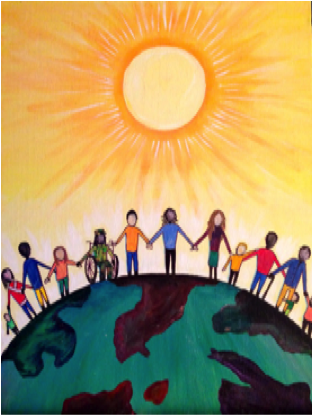Post-Traumatic Stress Injury and Fourth of July
Post-Traumatic Stress Injury (PTSI) is a condition that affects the mind and the body. It can occur in children, teens, and adults who have experienced or witnessed a traumatic event. PTSI can occur in all people, of any ethnicity, nationality, or culture. It is estimated one in 11 people will be diagnosed with PTSI in their lifetime. Women are twice as likely as men to have PTSI.
PTSI reactions are often sparked by multi-sensory reminders of the event that can feel like the event is reoccurring in the present moment even though it may have been years since the original traumatic experience. Fourth of July celebrations can be particularly challenging as fireworks, bright lights, and other sounds can activate a memory of a traumatic event. This can be especially problematic for people who have served in the military, experienced natural disasters, or gun violence. There are ways to intercept the sparks that are often sent off during July 4th celebrations and the events of the Summer months.
Human beings are designed for survival. So, when there are multisensory reminders of past traumas, individuals with Post-Traumatic Stress Injury can experience flashbacks, nightmares, and physical reactions such as uncontrollable shaking, accelerated breathing, and heart palpitations. They may all of sudden be gripped in fear and what to run away from the event.
Here are some ways to help yourself or others:
1) Track your nervous system
As you track your nervous system, bring your awareness to the present moment by a Grounding or Resourcing Exercise. Bring attention to sensations that are more pleasant or neutral and less painful. Download the iChill App if you have not done so already to practice Grounding and Resourcing.
2) Use Help Now! strategies to reset your nervous system
If the reminders are strong, Grounding and Resourcing may not be enough to bring your nervous system back to a more balanced state. Try one of the Help Now! Strategies. For example:
Drink a glass of water, tea, or juice.
If you are able, walk outside and touch the surface of something in nature noticing its texture, temperature, and other qualities.
Look around the space and pay attention to anything that catches your eye.
Name the colors you see in the space you are in.
Count backward starting from 20.
If you are inside, touch the surface of something (chair, rug, wall, etc.), noticing if it’s hard, soft, rough, etc.
Notice the temperature of the space you are in.
Notice the sounds within the room or outside. What do you hear?
Begin walking and pay attention to your feet making contact with the ground.
Push your hands or back against a wall slowly.
Get out your phone and listen to the Help Now! strategies on the free iChill app or visit iChillapp.com
If you notice your body beginning to calm down, bring your attention to the shift happening inside. Focus your attention on the sensations that are pleasant or neutral. What you pay attention to grows!
3) Breathe deeply and slowly
Breathing exercises are helpful for some individuals with post-traumatic stress injury but not for all. A part of your brain called the amygdala is sounding an alarm. When it sounds the alarm, it can send you into a fight, flight, or freeze response. For some people, paying attention to focused breathing can turn the alarm off or turn down the volume of the alarm being activated by your nervous system.
4) Prioritize your physical and mental health
Reach out to a friend or family member and remember the assets or resources in your life that can also help turn the volume down on the reactions connected to your post-traumatic stress injury. Bring out the iChill app or other calming resources and practice when your nervous system is not activated by the multi-sensory reminders. This can lay down new pathways in your brain connected to your well-being. Talk to a body-centered therapist who is trained in the Trauma Resiliency Model (TRM)®, EMDR, or other therapies that help you learn biological skills to help you bring your nervous system back into balance. Healing is possible!

